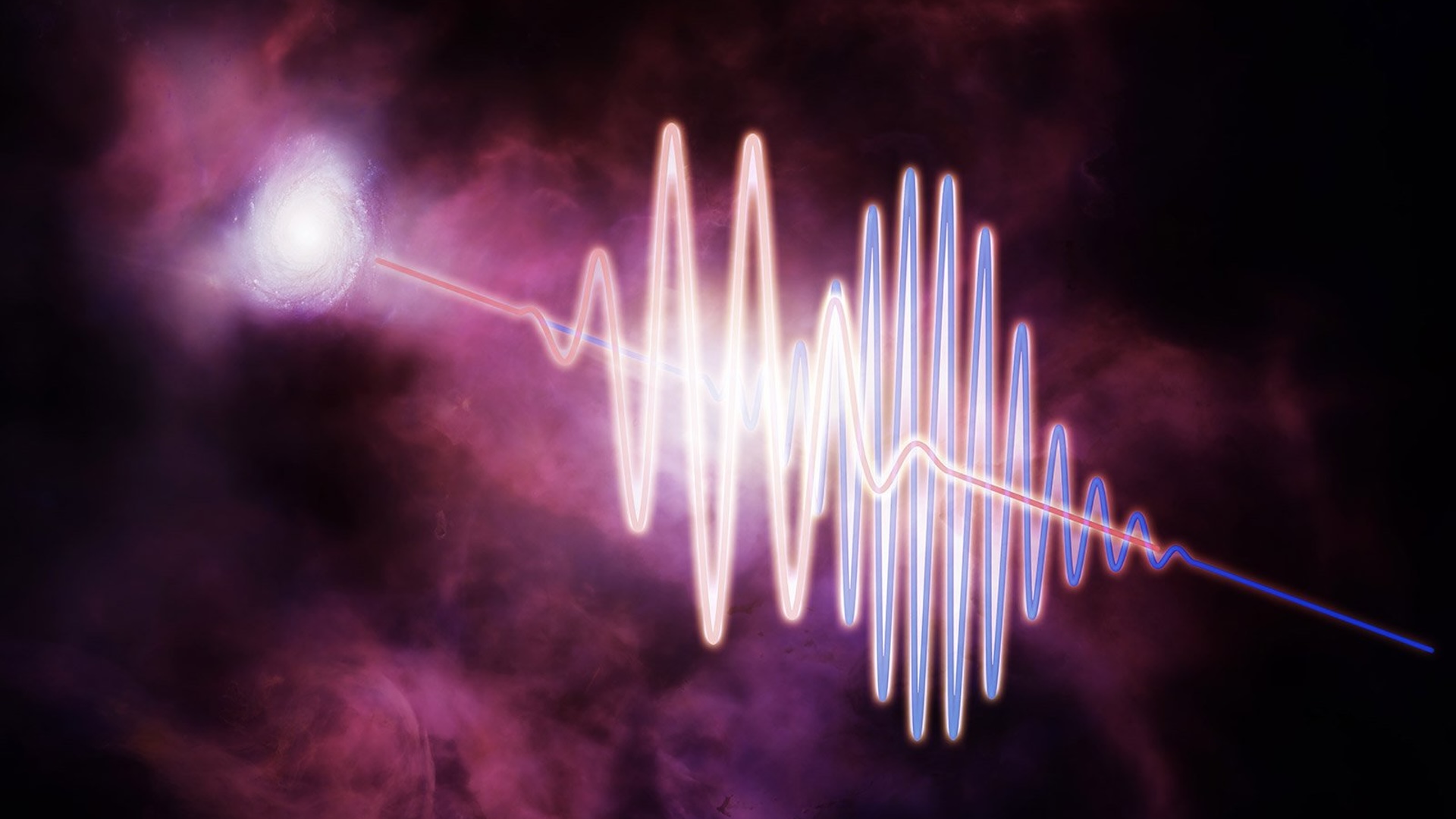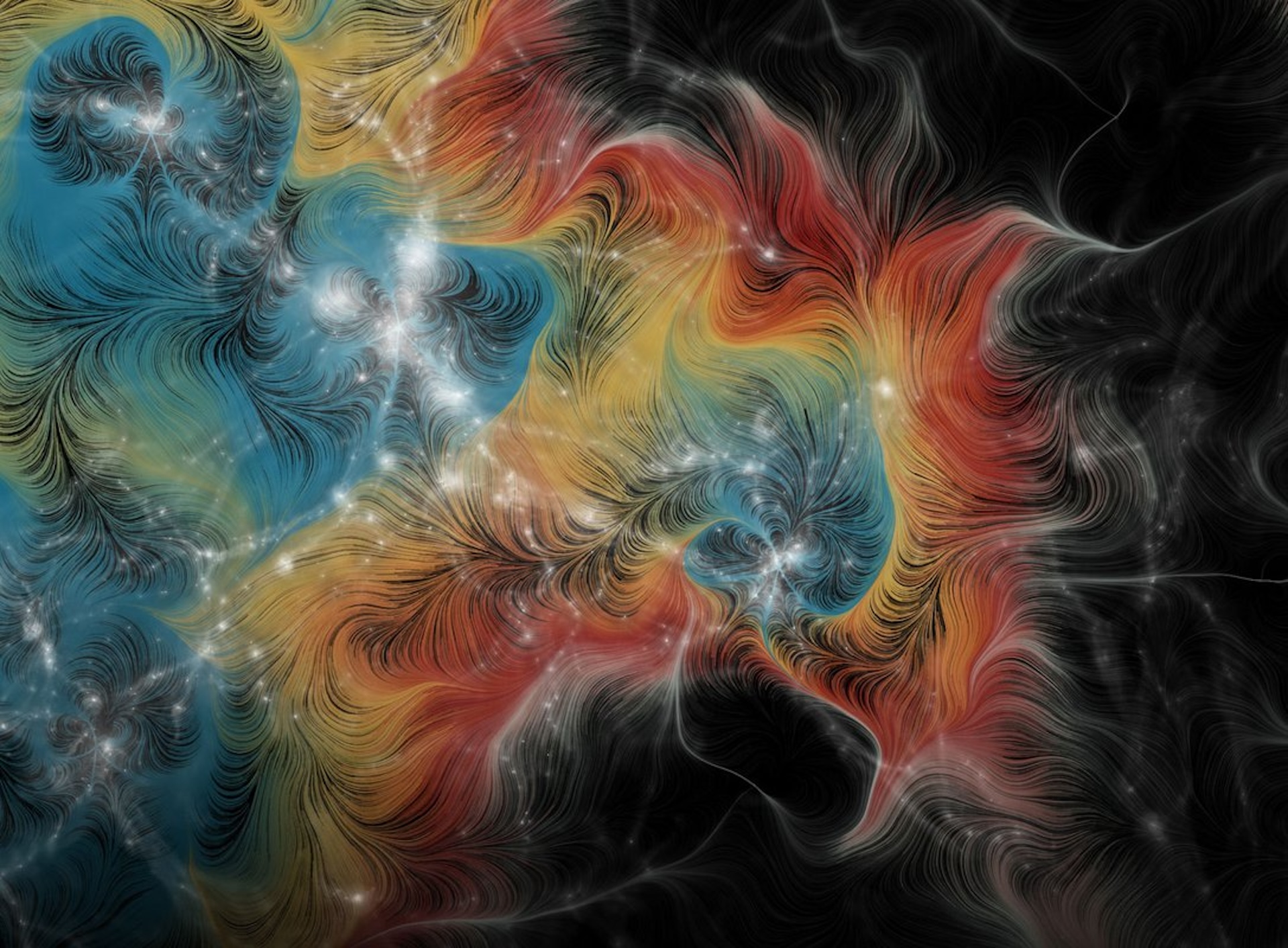
Roughly half of all the regular matter in the universe has been unaccounted for — until now.
In a new study, researchers claim that, using short, extragalactic flashes called fast radio bursts (FRBs), they have accounted for all the baryonic matter — the "normal" matter that makes up stars, planets, and other objects that interact with light — that we expect to find in the universe. Much of the "missing" matter is spread thinly through the space between galaxies, according to the study, which was published June 16 in the journal Nature Astronomy.
Baryonic matter, which is composed of particles like protons and neutrons, makes up just 5% of the universe. Another 27% is invisible dark matter, and the rest is mysterious dark energy that drives the universe's accelerating expansion. But scientists have been able to observe only about half as much baryonic matter as they expect to have been produced during the Big Bang.
To account for the remaining matter, the researchers looked to 69 FRBs to light up the intergalactic space that lies between the bursts and Earth. No one knows what causes FRBs, but most of the powerful, millisecond-long radio flashes originate outside the Milky Way.
"The FRBs shine through the fog of the intergalactic medium, and by precisely measuring how the light slows down, we can weigh that fog, even when it's too faint to see," study co-author Liam Connor, an astronomer at Harvard University, said in a statement.
Related: Earth's upper atmosphere could hold a missing piece of the universe, new study hints
Using this technique, Connor and his colleagues found that about 76% of regular matter in the universe lies in the intergalactic medium, the hot gas that fills the space between galaxies. Another 15% or so can be found in galaxy halos — the hot, spherical regions at the edges of galaxies. The remaining baryonic matter makes up the stars, planets and cold gases inside galaxies themselves, the team proposed.

"It's like we're seeing the shadow of all the baryons, with FRBs as the backlight," study co-author Vikram Ravi, an astronomer at Caltech, said in the statement. "If you see a person in front of you, you can find out a lot about them. But if you just see their shadow, you still know that they're there and roughly how big they are."
The findings observationally account for all baryonic matter in the universe for the first time, pinpointing not just whether this matter exists but also where it is concentrated in the universe.
"I would say that the missing baryons problem is essentially solved," Nicolás Tejos, an astronomer at the Pontifical Catholic University of Valparaíso who was not involved in the study, told Science magazine. "Thanks to FRBs, we have now been able to close this baryon budget."
In future studies, the team hopes to leverage the Deep Synoptic Array-2000, a proposed network of 2,000 radio telescopes that will scan the entire sky over five years, to pinpoint up to 10,000 new FRBs per year and investigate the universe's baryonic matter in even more detail.







